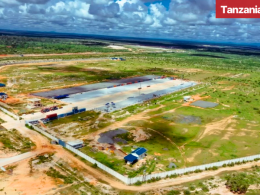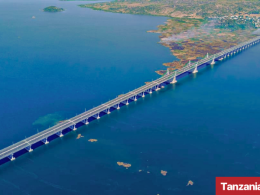Overview of the Tanzania Civil Aviation
TANZANIAINVEST has been interviewing Mrs. Margaret Munyagi, Director General of the Tanzania Civil Aviation Authority (TCAA), to learn about the Tanzania civil aviation sector and about the role of its institution within such framework.
| Margaret Munyagi, Director General of the Tanzania Civil Aviation Authority |
TI: What is the current situation of the Tanzania civil aviation sector and what is the development strategy and the challenges that you are faced with?
Margaret Munyagi – Tanzania Civil Aviation Authority: The Tanzania Civil Aviation Authority (TCAA) was set up at the end of 2003 as an autonomous regulatory body that would supervise the whole industry including the airlines, the airports and the companies which provide services to the airports.
Even before we became a full autonomous institute in 2003, we have been a self-autonomous entity since 1999.
Now, since we have become self-autonomous, and even much more after becoming autonomous, we have tried to focus very much on ensuring that the industry continues to be safe, that the operations continue to be provided in a safe environment.
We ensure that the airlines and the operators comply as much as possible with the requirements of the standards provided by the International Civil Aviation Organisation (ICAO).
I can say that, during this period, ICAO has found us very much compliant and that we have the capability to oversee the sector and to implement our functions.
There are some accidents, but we can say, by and large, that Tanzania is one of the safest countries to operate from.
TI: Are you saying that the safety situation of the civil aviation sector, and specifically of the airports, in Tanzania is adequate to the point that you can receive international flights from countries all over the the world, including the US?
MM: We can receive flights over the country from all over the world.{xtypo_quote_left}We can receive flights over the country from all over the world […] the US has some additional standards, which we are now trying to meet.{/xtypo_quote_left}
Now, the US is a different case.
In the US they have what they call “category 1,” which is required to receive flights directly from the US.
As I said, we are safe according to the International Civil Aviation Organisation.
Now, the US has some additional standards, which we are now trying to meet.
TI: Is there any time frame to get there?
MM: Yes, without being very pessimistic or optimistic, I would say that by the end of 2007 or sometime in 2008 we should be able to achieve category 1.
I just want to clarify that, although category 1 is definitely desirable, the current standards are good enough for the global international transport, and most countries do recognize that.
I think it is a very big achievement because there are so many other countries that have not even been able to achieve the minimum compliance with the International Civil Aviation Organisation standards.
TI: Part of the responsibility of the Tanzania Civil Aviation Authority is the economic regulation of this sub-sector, including tariffs monitoring. Now it has unanimously said that flying to and within Tanzania is expensive when compared to neighbouring countries. Why is this the case and is this going to change?
MM: Our role is to look at the tariffs, but we do not fix them, we just monitor them.
Here economies of scale play an important role.{xtypo_quote_right}[In order] for the air fares to come down […] we are working very closely with the promotion and marketing of our country so that we get more flights coming.{/xtypo_quote_right}
We realise, in fact, that for the fares to come down, one of the solutions is to increase the air traffic, but we realise that, as an authority per se, we do not have the mass or demand ready to increase the number of airlines and flights.
That is why we are working very closely with the promotion and marketing of our country so that we get more flights coming.
We have been also getting together with the Tanzania Tourism Board and the Tanzania Airport Authority to be able attract new operators to Tanzania, but definitely these will look at the business and the figures to see if they will be able get enough passengers.
TI: Do you provide suggestions to the airlines in this sense?
MM: We provide suggestions during our meetings with local airlines but we realised that providing only suggestions may not be enough to get lower prices.
What we are trying to do is to also review their own capacity to be able to analyse their break-even point and in order to assess whether the fares they apply are too high.
I must admit that we are still enhancing our capacity to be able to analyse the core structure of the airlines and to be able to advise them appropriately.
We have been incorporated as an autonomous body for only two years.
Since then, we have been trying to put our sector in place and definitely it is, now that we are building the capacity to get much more into the airline business and are able to advise them on how they can achieve lower fares for the traveling public.
TI: It looks like every body in the industry is waiting for somebody else to take the first step; the airlines are waiting for better infrastructures and higher demand and the government and the agencies involved are waiting for an increase in air traffic. What is your vision on this?
MM: My vision in the air transport sector is that the government still needs to take the leading role.
Investing in the required infrastructures in airports, like the runways that hinder the development of the industry, is a bit expensive and, for now, it may not be possible to get private investors to lead in this.
That is what we have realised from the privatisation experience with the Kilimanjaro International Airport being handed to KADCO.
At that time, the government thought that by bringing in a private investor they would be able to achieve the investment required in the infrastructure of that airport, which has not happened.
TI: Why do you think it did not happen?
MM: It did not happen because the Kilimanjaro airport handles less than 300,000 passengers per annum, which is insufficient.
It should be very unrealistic to expect KADCO to be ready to invest when the traffic is so little.{xtypo_quote}Once the infrastructure is upgraded we will be ready to attract the private sector to come in to manage those upgraded airports.{/xtypo_quote}
Even an airport like Dar es Salaam, with an average of 1,000,000 passengers per year, would not be enough to be financially sustainable.
Indeed, with these numbers for the air transport, we really need a public sector to come in and invest heavily into the infrastructure.
Then, once the infrastructure is upgraded we will be ready to attract the private sector to come in to manage those upgraded airports or to have airlines set up their airbase here, like at the Dar es Salaam international airport, for example.
However, much we are try to get airlines and to make Dar es Salaam a hub, with the way the infrastructure is now it would be very difficult for any airline to have a lot of operations.
Now the government has realised this and is soliciting has financial resources.
Outlook of the Tanzania Civil Aviation
TI: Where is the government willing to bring the Tanzania civil aviation sector?
MM: According to the election manifesto, the vision is to have Dar es Salaam as an international hub, although we have realized the hubs are not made by the government or by the civil aviation authority, but by airlines.
TI: The airline, Air Tanzania was recently returned to the managerial hands of the Tanzanian government after an unsatisfactory privatisation with South African Airlines. What do you think will be the result of this move? Do you think the government is going to run Air Tanzania on its own?
MM: I do not think that the government has decided to carry the Airline for long alone, that would not be possible.
The question is to try to improve the status of the airline as much as possible and then welcome a more meaningful partner.
I would expect this process to take one, two, maybe three years.
TI: In the last years, the Tanzania civil aviation sector has been improving by reaching international standards. At the same time, there is the government desire to make Dar es Salaam Airport a regional hub. What are the greatest challenges that you are faced with and how are you looking to accomplish such tasks?
MM: One of the biggest challenges we have is to sustain the safety records achieved.{xtypo_quote_left} What we should do for the country is to assure that we get meaningful investment and improve the infrastructure.{/xtypo_quote_left}
Also, we have the issue of setting up one single Aviation Authority for East Africa.
In that way, we think we can meet the economies of scale, we can improve our knowledge together, and get ready in the same area.
Another main challenge, that we previously discussed, is the infrastructure development.
What we should do for the country is to assure that we get meaningful investment and improve the infrastructure.
The government is working very hard to attract the investments in the Airport and I think we are actually near to succeeding in getting some investment in the infrastructure [which will allow us] to be able to stimulate other developments in the sector.










